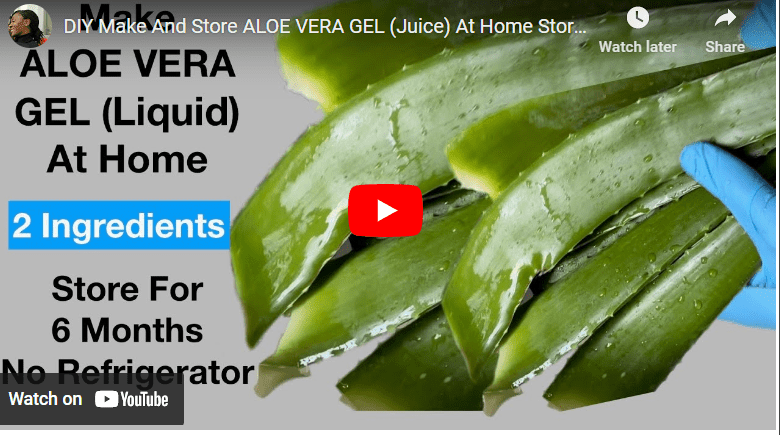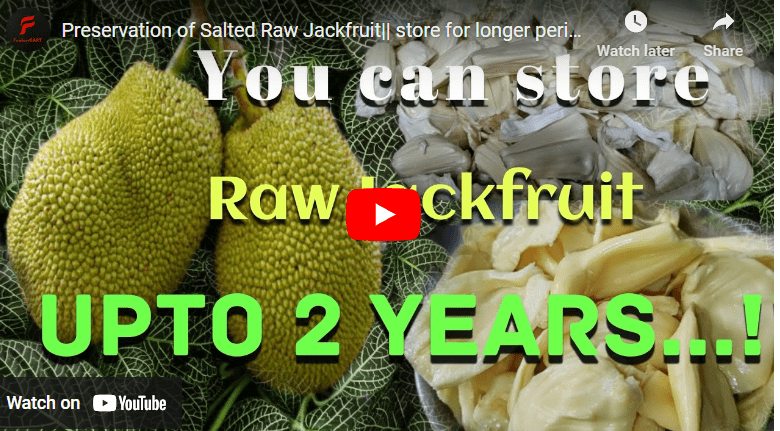Yam is an important staple food in many parts of the world. It is a versatile and nutritious food that comes in a variety of colors, textures, and flavors.
Poundo yam flour is a popular staple food in Nigeria and many other parts of the world. It is made from yam tubers, which are peeled, boiled, pounded, and then sieved to remove any lumps. Poundo yam flour is rich in carbohydrates, vitamins, minerals, and dietary fibers, making it a great choice for a balanced diet.
To process poundo yam flour, start by peeling the yam and cutting it into small cubes. Boil the cubes in water until they soften, then drain and mash the yam with a wooden spoon or mortar and pestle. Once the yam is mashed, spread it out on a large flat surface and allow it to dry for several hours. Finally, grind the dried yam into a fine flour with a blender or food processor. With this simple process, you can make your own poundo yam flour for delicious Nigerian dishes!
How To Process Poundo Yam Flour Step By Step Guide
Poundo yam flour is another end product of yam. Interestingly, we will be showing you the steps on how to process poundo yam flour from beginning to end.
Read Also: How To Process Potatoes Flour
Step 1: Clean The Yam To Remove Any Extra Dirt And Sand
To clean a yam properly, start by using a brush or cloth to remove any dirt and sand that may be present. Scrub the yam gently as to not damage the skin and rinse thoroughly with water. Once all visible dirt and sand is removed, the yam is ready to be cooked.
Step 2: Peel Yam Using a Knife and Soak in Water
The second step is to peel the yam using a knife. Start by washing the yam under running water to remove any dirt or other contaminants.
Read Also: How To Process Plantain Flour
Then, place the yam on a cutting board and, using a sharp knife, carefully cut off the skin. Ensure to cut off as little of the yam itself as possible. Once the skin is removed, you will be left with the edible flesh of the yam.
Once the yam is peeled, it should be soaked in cold water. This will help to remove any remaining dirt, as well as prevent the yam from discoloring while it is being prepared.
To soak the yam, place it in a bowl filled with cold water, and leave it for at least 30 minutes. After the yam has been soaked, it is ready to be prepared and cooked.
Read Also: How To Process Pepper
Step 3: Thoroughly Wash the Yam and Leave it in Water after Washing
To ensure that the yam is completely clean from dirt, it is important to thoroughly wash the yam. Start by running cold water over the yam for a few minutes, paying special attention to the crevices, where dirt and debris can easily get stuck.
It is also essential to scrub the yam with a brush to remove the excess dirt that may be clinging to the surface. After washing, it is important to leave the yam submerged in water to prevent it from drying out.
Read Also: How To Process Palm Kernel Oil
This is especially important when cooking the yam, as it will help to keep the yam moist and prevent it from becoming dry and tough.
Step 4: Slice The Yam Into Thin, Uniform Chips Under Water
Cutting the yam into thin, uniform chips is a crucial step in making yam chips. This method allows for even drying, resulting in a more consistent texture and flavor.
It also reduces the amount of time required for drying, as the thinner chips will dry more quickly. To ensure uniform cuts, the yam should be sliced under water.
Read Also: How To Process Okpa Flour
This prevents it from sticking to the knife, allowing for more precise cuts. Additionally, it helps reduce the amount of starch released, which can cause the chips to stick together when drying.
Cutting the yam into uniform chips ensures that each chip will be consistent and that the drying process will be efficient.
Step 5: Parboil The Yam Chips
Before beginning the process of drying the yam chips, it is important to parboil them first. To parboil the yam chips, transfer them from the cutting board into a pot of hot water.
Read Also: How to Process Millet into Flour
Let the chips remain in the pot for 5 minutes. It is important to note that the yam chips should not be cooked during this step, as the goal is only to soften them slightly in order for them to hold their shape better during the deep-frying process.
After 5 minutes, remove the yam chips from the pot and proceed to the next step in the recipe.
Step 6: Strain the Parboiled Yam Through a Sieve to Remove Any Excess Water
Once the parboiled yam has been boiled, the next step is to strain it through a sieve. This will help to remove any excess water that may still be present.
Read Also: How To Process Maize Into Flour
The sieve will allow the yam to pass through while catching any water or other particles that may remain.
This will help to ensure that the yam is free of any excess water and is ready for further preparation or cooking. It is important to use a sieve that has a relatively fine mesh to ensure that any excess water is effectively removed.
If a sieve with coarser mesh is used, then the water may not be completely filtered out. When straining the yam, it is important to do it gently and with care. This will help to retain the yam’s flavor and texture as it passes through the sieve.
Read Also: How To Process Coconut Oil
Step 7: Dry the Parboiled Yam
Drying parboiled yam is an essential step in the preparation process as it not only helps to preserve the yam, but also gives it a more intense flavor and a firmer texture. There are three different methods to dry the parboiled yam.
#1. Sun Dry
Sun drying is the most natural method of drying yam chips. Place the slices onto a tray and leave them in direct sunlight for 2-3 days.
Read Also: How To Process Cassava to Garri
Make sure to turn the slices over every 12 hours so that both sides can dry evenly. Once the yam chips have dried, you can store them in an airtight container.
#2. Dehydrator
Dehydrator drying is the most consistent and efficient method of drying yam chips, but it can be expensive.
Transfer the yam chips into a food dehydrator. Turn on the dehydrator and set it to 160°F or 70°C. Dehydrate the yam chips for 14hrs. After using a food dehydrator for the yam chips, ensure that you wait for them to cool down before handling them.
Read Also: How To Process Cashew Nuts At Home
#3. Oven-drying
Oven drying is an efficient way to dry yam chips. Preheat your oven to 200°F and line a baking sheet with parchment paper. Place the yam slices on the parchment paper and bake for 3-4 hours, flipping the slices halfway through the baking time. The chips should be crisp and golden brown when done.
Note that irrespective of the method of drying, the yam chips must be properly dried.
Step 8: Grind or Mill the Yam Chips into a Fine Flour
This is where you process the yam chips into fine flour is to grind or mill the chips. To do this, the chips must be placed into a milling machine, which is a specialized piece of equipment that uses blades or disks to grind the chips into a fine powder.
Read Also: How To Preserve Spring Onions For Long Time Storage
Depending on the type of milling machine used, the chips may need to be pre-ground or pre-milled before they are placed into the machine.
The milling process can take anywhere from several minutes to several hours, depending on the size of the chips and the desired fineness of the flour.
Once the chips have been milled into a fine powder, it is important to sift and screen the flour to ensure that it is free from impurities and debris.
This process involves passing the flour through a screen or sieve in order to separate out any particles that may have been missed during the milling process.
Read Also: How to Preserve Yam for Long-Time Storage
Step 9: Allow the Ground Poundo Yam Flour to cool Completely before Packaging
Allowing the flour to cool completely before packaging is an important step in the production process.
The cooling process allows the flour to dissipate the heat generated during the grinding process and reach a temperature that is suitable for packaging. This ensures that the flour is preserved and maintains its quality when packaged.
It is important to ensure that the Ground Poundo Yam Flour is allowed to cool completely prior to packaging. This is to ensure that the flour does not become soggy or lose its texture and taste when it is packaged.
Read Also: How To Preserve Watermelon For Long Time Storage
If the flour is not allowed to cool completely, the heat generated during the grinding process can cause the flour to become moist, which can cause it to stick together when packaged. This can also cause the flour to lose its flavor, texture, and color.
Step 10. Storage And Packaging
After the yam flour has been processed, it needs to be carefully stored and packaged. This step is essential in order to ensure that the product is safe and secure while in transit, and to prevent any damage during shipment.
Read Also: How To Preserve Water Leaf For Time Storage
Storage of the product requires appropriate and secure spaces, depending on the size and type of the product.
The product should be stored in a dust-free, temperature-controlled environment, and away from moisture, rodents, and other potential contaminants.
For example, food products should be stored in a cool and dry place, in order to prevent spoilage.
Packaging is also an important part of the storage process. The product needs to be packaged in an appropriate manner, depending on its size and nature.
Read Also: How To Preserve Vegetables For Long Time Storage
For example, fragile products should be packed with extra cushioning to provide additional protection.
The package should also be marked clearly with the product information and the destination address, so that the product can be easily identified upon arrival.
Benefits Of Processing Poundo Yam Flour
Processing poundo yam flour offers a number of benefits. It is a convenient, nutritious, and versatile food product that can be used in a variety of different dishes.
Poundo yam flour is high in dietary fiber, minerals, vitamins, and protein.
It is also an excellent source of energy and can be used as a substitute for wheat flour.
In addition, the processing of poundo yam flour reduces the risk of food-borne illnesses, since it is cooked and dried before packaging.
Read Also: How To Preserve Tiger Nut For Long Time Storage
It also has a longer shelf life compared to fresh yam.
Challenges Of Processing Poundo Yam Flour
Processing poundo yam flour can be quite challenging. This is because the process involves several steps, such as washing, peeling, slicing, drying, grinding, and packaging.
Each step requires specialized skills and equipment. Additionally, it is important to ensure that the flour is of good quality and free from contaminants.
Furthermore, there is a need for proper storage and handling of the flour during the processing process, as well as during transportation and storage.
Read Also: How To Preserve Sweet Potatoes For Long Time Storage
How To Use Poundo Yam Flour
Poundo yam flour can be used in a variety of dishes. It can be used to make dough for fufu, a traditional African dish made of mashed yam. It can also be used to make porridge, pancakes, and bread.
Additionally, it can be used to thicken soups and sauces. Poundo yam flour can also be used for frying, baking, and making desserts such as cakes and puddings.
Factors That Affect The Price Of Poundo Yam Flour:
The price of poundo yam flour is affected by several factors, such as the cost of production, the quality of the raw materials used, and the availability of the product in the market.
Additionally, the cost of transportation and packaging may also affect the price. Furthermore, the demand for the product can also affect the price.
Read Also: How To Preserve Scent Leaf For Long Time Storage
Ingredients Of Poundo Yam Flour
Poundo yam flour is made from the starchy tuber of the yam plant. To make poundo yam flour, the yam is washed, peeled and grated to form a thick paste.
After drying, the paste is finely ground to form a powder. The resulting powder is poundo yam flour, which is a staple in West African cuisine.
How To Make Poundo Yam Flour Without Lumps
To make poundo yam flour without lumps, start by washing and peeling the yam.
Grate the yam into a thick paste then spread it out on a baking sheet. Bake the yam paste for about an hour, stirring it every 15 minutes.
Once the yam paste is dry, grind it in a food processor until it forms a fine powder. Finally, sift the powder to remove any lumps.
Read Also: How To Preserve Ripe Plantain For Long Time Storage
How To Make Yam Flour Amala
To make yam flour amala, start by washing and peeling the yam. Grate the yam and spread it out on a baking sheet. Bake the yam paste for about an hour, stirring it every 15 minutes.
Once the yam paste is dry, grind it in a food processor until it forms a fine powder. In a bowl, mix the yam flour, enough water to form a paste, and a pinch of salt.
Knead the mixture for about 5 minutes until it forms a smooth dough. Finally, shape the dough into small balls and cook in boiling water until they float.
Read Also: How To Preserve Rice from Weevils
Pounded Yam Flour Near Me
Looking for pounded yam flour near you? Many grocery stores carry poundo yam flour, as do some specialty food stores.
You can also find it online from a variety of retailers. Be sure to check the ingredients list to ensure you are getting the correct type of yam flour.
If you can’t find poundo yam flour near you, you can make your own at home with a few simple ingredients.
Read Also: How To Preserve Onions For Long Time Storage
Conclusion
Processing poundo yam flour is a simple yet crucial task that requires attention to detail. By following the steps outlined in this guide, you can produce a high-quality poundo yam flour that is free of lumps and suitable for making various dishes. With practice, you can master the art of poundo yam flour processing and enjoy the rich flavor and texture it adds to your meals.




